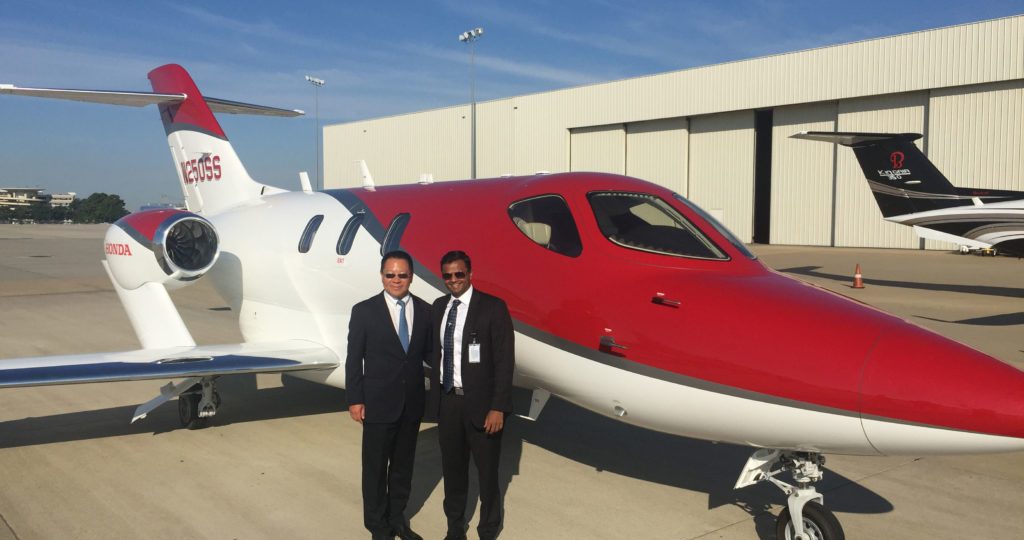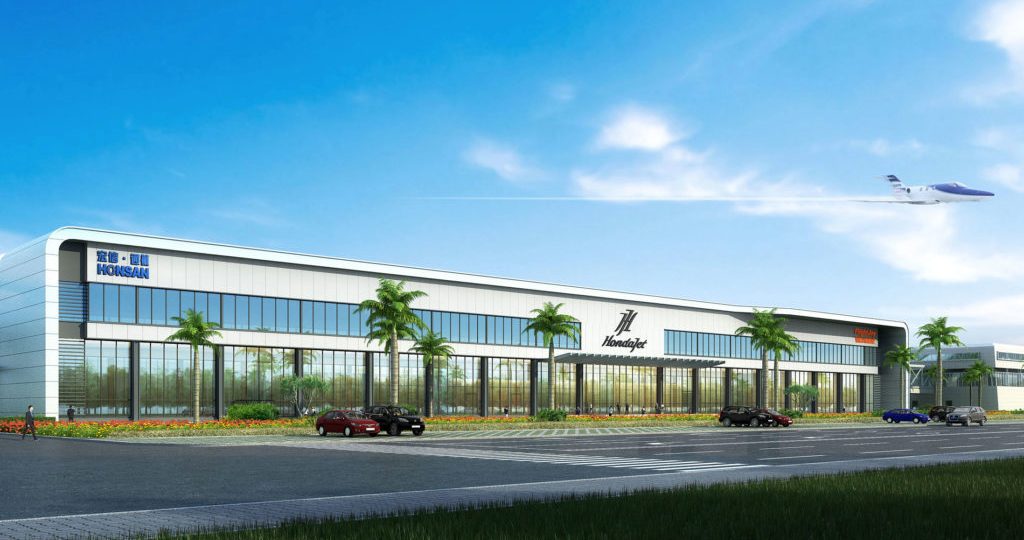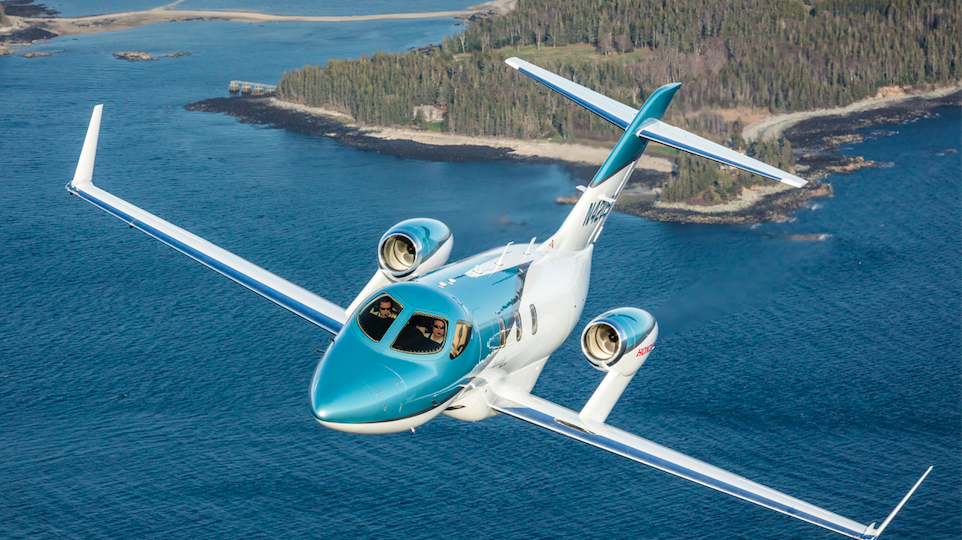Dr Cheng Qian: Promoting the people’s plane

Given the popularity of large and heavy jets in China, how will you persuade people from big jets and big cabins into a smaller light jet?
We don’t need to persuade them; the tide of the market is already changing. Since 2013, the business jet fleet has not increased very much, as the pace of jet buying is slowing down. But the chartering hours are increasing significantly. People used to want to own a jet, particularly a larger jet, to show their social status. Now many people are starting to be more practical, and just paying to buy the charter service.
Does this show a growing maturity in the Chinese market?
Yes, you see an increased maturity, as people become rational, rather than emotional buyers. It is no longer just the super rich people consuming luxury; more and more people are using private jets as a tool for business travel – a time machine. There is also a growing number of occasional users, who want travel on demand. There is now just a small number of owners who use their jets totally privately. This is how the market trend has changed.
We are going to work with this new market, to try to provide a popular business jet, which is convenient and efficient as a private travelling tool. That is the objective of the development of HondaJet. It is what it is designed for and that is how we will position it.
If you look at a mature market, either the US or European markets, the light jets make up a majority of the business aircraft. In Greater China there were about 500 jets by end of last year, so we anticipate there are at least 600-800 light jets for which the demand is not satisfied. That is the market segment that we are targeting. I also believe that the segment of turboprop airplanes used for business travel in traditional markets may be replaced by light jets in emerging markets due to technology advances.
Given the vast size of China, and Asia, do you feel that the HondaJet has the range required by a businessman who wishes to visit his factories in the region?
HondaJet’s operational range is 2,600km. If based in a city such as Guangzhou or Shanghai it will cover most of the major industrial cities in China. Only the very remote cities, like Urumaqi in the northwest of China, cannot be reached. It will even cover Korea and the major part of Japan. If we start from Guangzhou, we can cover most of Southeast Asia, almost down to Singapore. Based on our data, the average range operated by a business jet in China is less than three hours, which is right in the HondaJet’s operational range. At the same time, market study indicates that most business trips are made with fewer than five people. These demands make HondaJet a perfect tool for this region.
The current list price of HondaJet is US$5.25million, one tenth of the average business jet purchasing price of US$45million. In my early career, I worked with CAAC in the field of Direct Operating Cost (DOC) analysis and fleet planning. I am very sensitive to the operating costs, understand a uniform fleet can save a lot in flight operations. HondaJet is not only low in acquisition cost, but also very low in maintenance cost, such as its engine TBO, which is 5,000 hours. I believe that a single type HondaJet-only fleet can achieve a record low operating cost in business aviation, which will help make HondaJet the most affordable jet in this emerging market.
You are a HondaJet dealership, rather than a sales representative. How does it differ?
Honda Aircraft Co is the only company in the world to use a dealership to sell jets. HGA sells the jets and also provides services. Sales representatives only take commission on the sales. As a dealer, we buy the jets from Honda Aircraft, as wholesale in volume, then we resell to each individual customer and provide services and support. Obviously, we have to invest more and develop strong capabilities in order to serve our customers better. We have to keep a strategic relationship with Honda Aircraft for a long-term development.
So the company’s commitment is much greater?
Yes, our commitment is much greater. We also face the challenge that when we sell a jet, the customer needs an operator to provide management for them. In China it is very difficult to find an operator that can manage the HondaJets. The reason is that the Part 135 or 91 certified AOC operators are normally tailored to manage large jets, with an average annual cost over RMB10 million per aircraft.
So how do your customers find reasonable management?
We have established a company, called FlightJoy Aviation, in order to manage our customers’ jets. FlightJoy will be a Part 135 operator, and will operate totally differently. We are looking at some very innovative ways to help our customers.
First, instead of providing management for our customers, as many people do as a Part 91 operator, we set out to be a Part 135 operator. We do not just manage the jet for the customer; the customer actually leases the jet to us. Instead of a lease payment, we provide them with about 200 hours use of the jet each year. They do not need to pay a management fee. We then put the jet out to charter on the market, through timesharing and a jet card. In this way we can easily manage the jet with a high utilisation. Based on our estimation, if we operate 300 hours each year the aircraft will break even, beyond that it will start to make profit, instead of sitting there losing money.
The owner can buy more hours, but normally we find they cannot use all of the 200 hours.
This leads us to our second strategy. For owners who will not use their 200 hours, we help multiple users come together to buy a jet. They form a partnership, similar to fractional ownership elsewhere in the world. We then treat them as one customer, and they split the hours as suits them. Maybe one partner uses 100 hours, the other two use 50 hours each, so they use all the 200 hours.
By creating this fractional ownership, which is new in China, we are able to lower the threshold at which someone can buy a HondaJet and increasing its affordability. It also increases the customer base in this market.
Our third strategy is to develop our market by using mobile internet, to find customers who are new to the industry. We are working on our apps, which should be able to reach millions of potential customers in a very cost effective way.
In China we have to find people who are not private jet users because this is a new market. The potential market is huge, but the light business jet is new. Many people do not know about them or that they could use them. We need to find a way, in a potential market, to find the very small percentage of customers who want to buy this kind of service.
I believe this will be very effective in a sizeable market such as China. If we can find 1,000 customers among 10 million potential customers, then we can keep our fleet busy enough to be profitable. That is the key to success.
What is the timescale for your new ventures?
We are helping Honda Aircraft apply for their VTC from CAAC, and we anticipate this will be approved in September. We have eight orders already and we are scheduling delivery, mainly based on our capability to operate them.
The first jet will be delivered in October, with the following jets in the first quarter of next year. We need a few months to develop our operational capability as we need to train people, recruit the pilots, and to get used to operating this aircraft. We anticipate a fleet of three jets in the first half of next year. By the end of 2019, we will have at least six jets in operation.
You believe that this can become a highly popular jet in China?
I think we can build up the fleet in the future up to about 200 aircraft. It could be the largest business jet fleet in China. It is a new business model with various innovative strategies, including corporation with Guangzhou Baiyun Airport authority to build a dedicated hanger in order to lower the operation costs. I believe that we will change the game in this emerging market.
HondaJet provides the most valuable part of business jet service, with no extra luxury or ostentation. It is efficient, convenient and private. We want to make it become a popular public tool for business, like a Honda car instead of a Rolls-Royce. If you buy a Rolls-Royce, you need someone to look after it, but normally only the owner can use it, because it is a precious personal thing. But with a Honda car, you can treat it like a taxi for anyone to use. That’s how, based on the product’s position, we created this business model.
We want to reshape the industry. Not only because of the lower cost and affordability, but because we believe we can capture a huge number of occasional users. They could never afford to use the business jet routinely, but once in a while they need it. Just like workers who travel by bus. Occasionally they need a taxi. This doesn’t mean that they will take a taxi to work every day, but if they need to travel urgently they need a taxi.
HondaJet is a unique light jet, and we believe it can be popularised and it can become the favoured jet operating in China. Currently, China’s national policy is encouraging the development of business aviation. The operation of light business jets, which can make significant contribution to nation’s economy, complies with this policy very well.
HondaJet is a strong brand, with a gene of innovation and efficiency, and we are committed to the company for long-term development.
And that is why we will talk to each general aviation authority, and they will allow us to set up our own FBO and MRO, so we lower our costs and grow our fleet nationally. The HondaJet is a game changer and so is our business approach. I hope we will bring vitality and freshness to business aviation industry in China.









